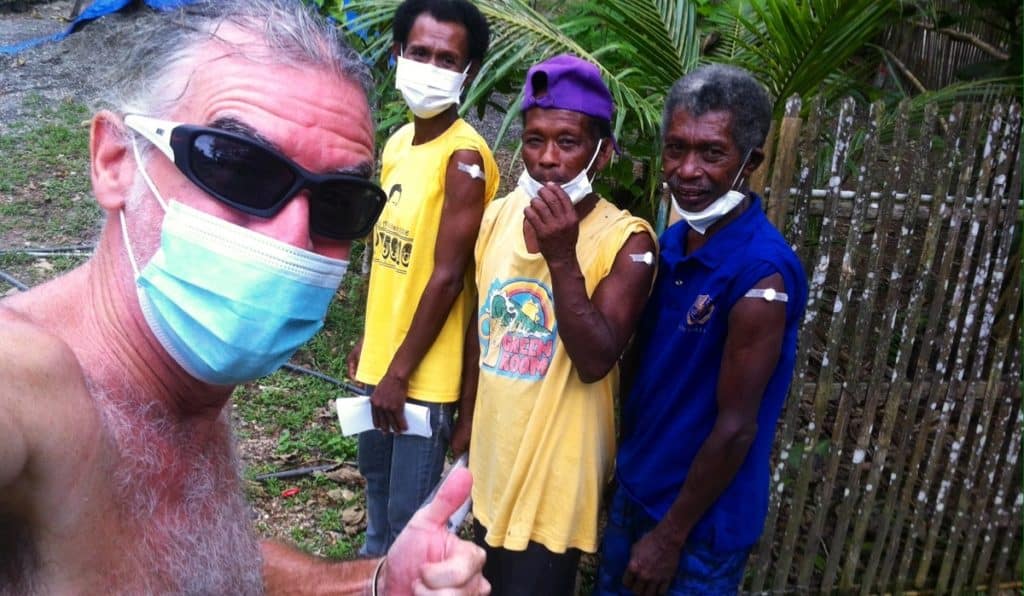Last Updated on October 25, 2024 by Ellen
The good: inoculations
The photos here are quite pleasing to me personally. For months I have been urging (even badgering) members of the indigenous Ati tribe to get their COVID-19 vaccinations.
Now, many of my tribal friends have done so. Pictured here are Charlie and Erlot and Romel shortly after they received their first dose of the Pfizer vaccine; and a whole group of Ati getting snacks – on me – as congratulations for the big moment.
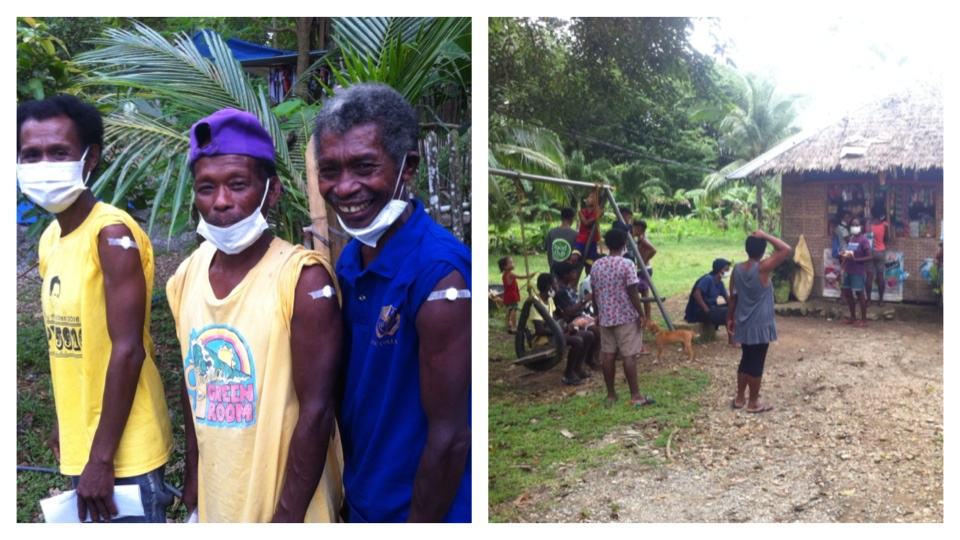
These are many of the same Ati who have worked on our various self-sustainability projects here in Malay, Aklan, Philippines where we have paused our global wandering to wait out the virus crisis.
In fact, the Ati had priority eligibility for vaccines. They often live in ‘close quarters’ with poor diets and other comorbidities – meaning they could have gotten shots long ago. Sadly, social media and scary gossip created a hesitancy.
Recently, however, a renewed campaign to reopen this area (specifically Boracay island) to tourism has resulted in a bigger push and more messaging to the Ati and others. Get vaccinated!
At the same time, more vaccine is available. Supplies of Pfizer and Moderna jabs have become commonplace thanks to donations by the US. (We received Johnson & Johnson in early August.)
The municipality of Malay has even provided transport for groups of Ati to and from the vaccination site.
It’s working. Vaccination rates are increasing; the Ati see there is nothing to fear; and they want to participate in whatever economic rebound a tourism reopening will bring.
More planes are already arriving daily – though an international reopen is still in the planning stage. We will continue to advocate for vaccines – and second doses – for our Ati friends.
The bad: Norman
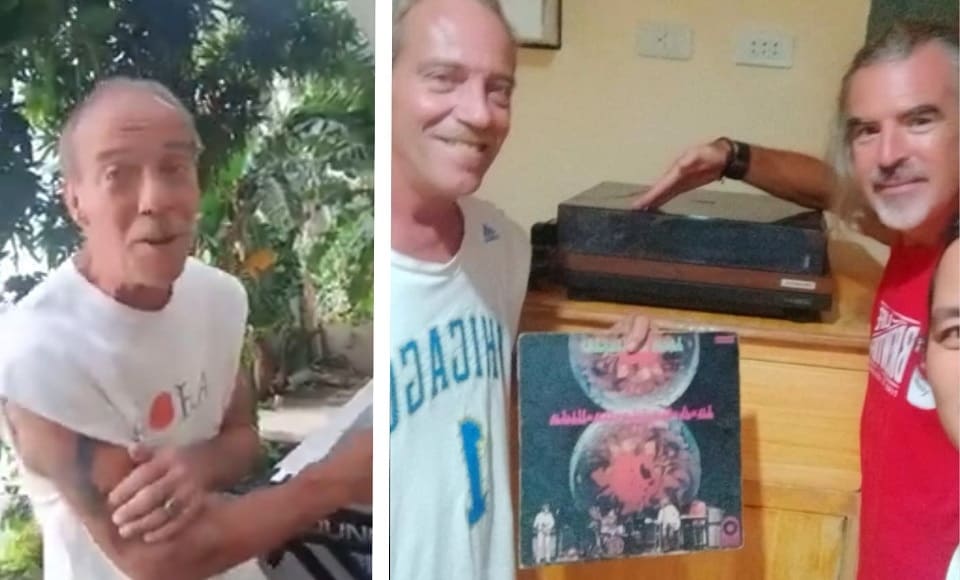
Norman C. Schott, pictured above, was an American ex-pat living here on Panay island.
I met Norman several times and shared beers and laughs and retirement tales with him. We were not close friends but he seemed like a decent and harmless enough guy.
I was dismayed to hear a few weeks ago that Norman had died after a fall and hospitalization. At the time, I was shown a video of him taken in the hospital. He was smiling, laughing, appeared in good spirits. No details were to be had about his demise thereafter.
Even worse, by the time I heard he had passed away, his body had gone unclaimed for weeks in our provincial capital of Kalibo, about 75 miles away.
Now news that our local municipality used some resources to provide a simple burial in the town cemetery. I guess that is an improvement/ending.
I understand there was some communication with Norman’s family back in the USA – but Norman remains here. The whole episode is very sad and disturbing. I feel like I should do something.
Norman bragged about being a retired U.S. Navy sailor, based in Honolulu, Hawaii before retiring. He was born October 12, 1952. He hailed from Green Bay, Wisconsin. He loved the Packers and classic rock music records and travel and stupid jokes and beer. He could have been any of us.
I intend to contact the U.S. Bureau of Veterans Affairs and see if there is anything they can do. Maybe he could be re-buried in Manila with the thousands of other American servicemen? Or perhaps a military gravestone could be provided here? I don’t know the protocols or process – but I’m gonna find out.
At the very least, of no one cares to do anything more, the Earth Vagabonds will pay for some kind of memorial marker bearing his name. He was a person; a fellow traveler. He deserves that.
RIP Norman. Again, he could have been any of us.
And the ugly: destruction
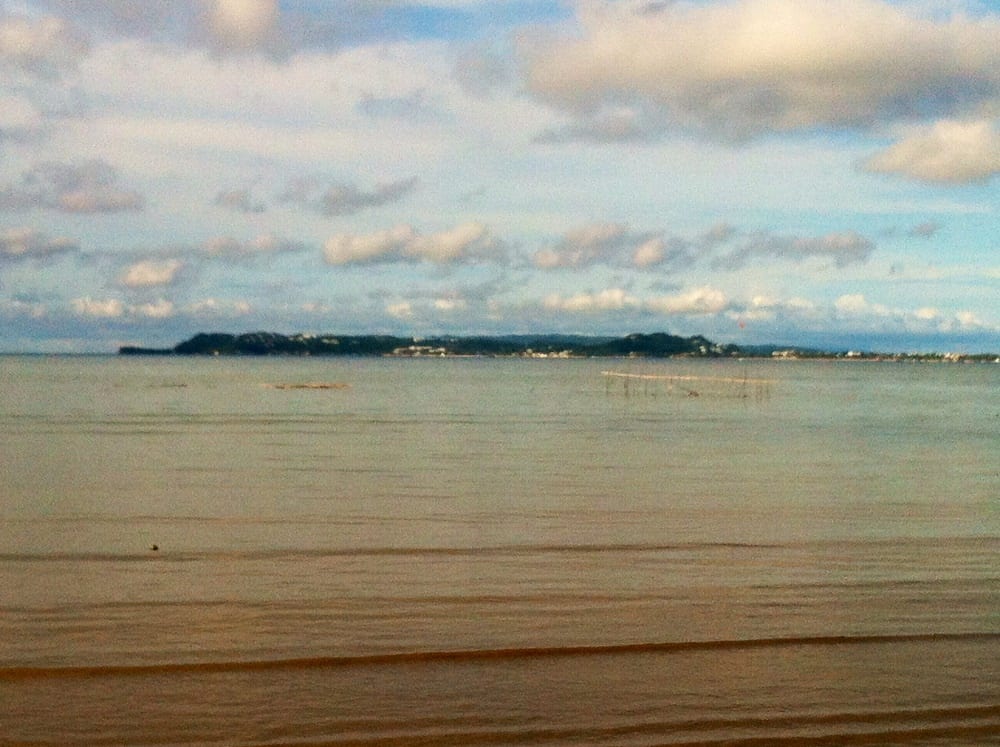
The photo above looks pretty peaceful. The island in the distance is world-famous Boracay. But the foreground is a small-scale disaster.
If you look closely, you can see floating debris, trees, netting, nylon tie ropes. A few pieces are still standing – but sagging, crooked, ruined.
THAT is what remains of the squid/fish trap that we sponsored and has been producing a reliable source of sustenance for a local extended family during the last six months.
Overnight on Thursday, a quick-moving weather front blew through our area. The resulting rough seas and strong winds combined with a high tide to demolished the extensive shallow-water fishing contraption.
Below are a few photos of the pen in better days.
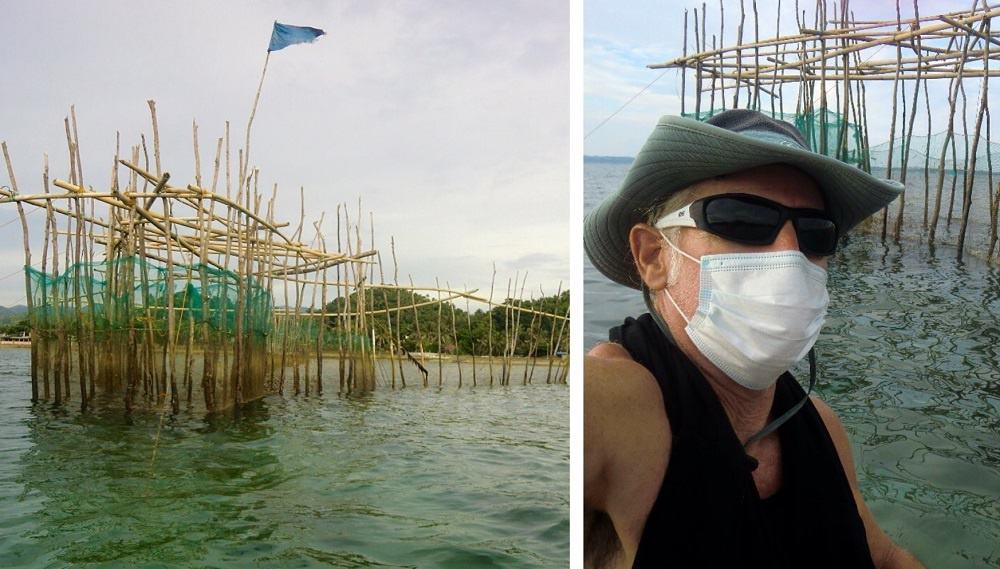
Actually, the damage comes as no surprise – at least, to locals. Now is the beginning of ‘Amihan’ season when strong Northeasterly winds and currents are more likely to create strong-seas on our northeast-facing coastline.
Really, we all knew it was just a matter of time before the trap was wiped out. Still, we had hoped it might survive a few more weeks/storms. The squid and other ‘free’ fish it provided were greatly appreciated and enjoyed.
Fortunately, the big nets and nylon lines and whatever else could be salvaged was retrieved and will hopefully be used again after Amihan.
In fact, I am inspired to investigate other potential designs and options for similar trap concepts. This retired guy from Cleveland, Ohio, USA (Lake Erie) knows very little about age-old tropical fishing techniques, but I have a few ideas that might be useful. We shall see.
As always, be thankful and generous, happy trails & more beer.
Life is NOW!
Thanks for reading, “The good, the bad, and the ugly.”
New here?
Check out the story of how we got ‘stuck’ in Malay in the pandemic.
Visit our special page on our projects to help the indigenous Ati tribe.
Get to know us better – start on our ‘About’ page.

